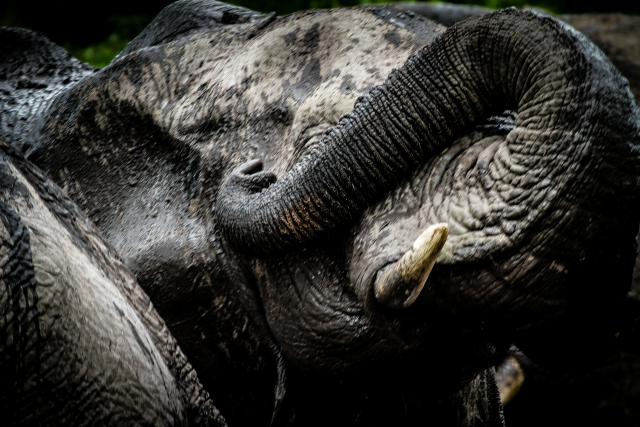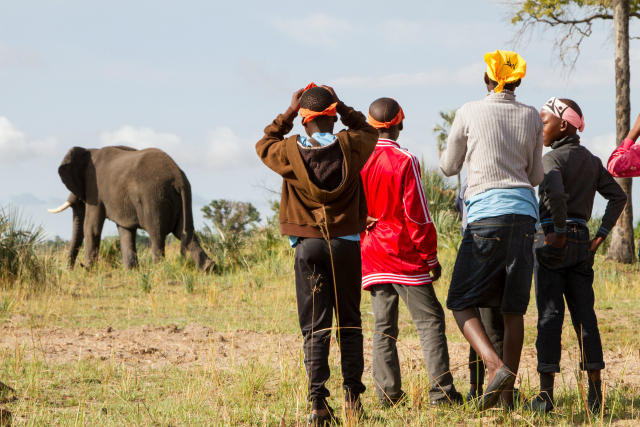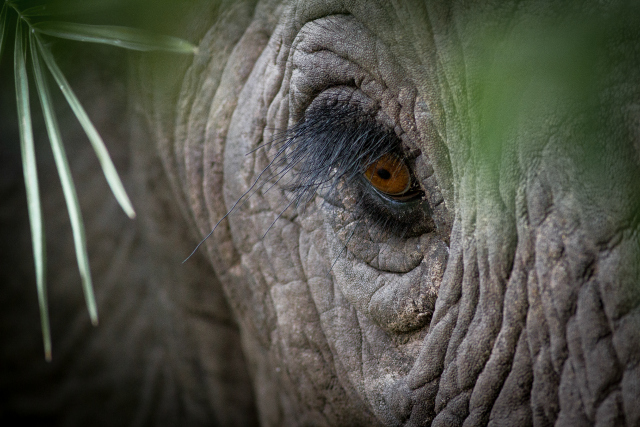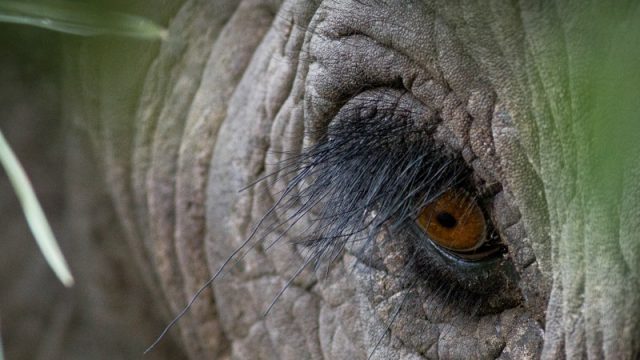Northern Botswana’s Okavango Delta is home to some of the greatest concentrations of wildlife left in Africa. Elephants are present in numbers seen nowhere else on the continent. There are an estimated 130,000 elephants in northern Botswana, which amounts to about a third of all the elephants in Africa.

Stuart Butler
With a forward-looking, conservation-friendly government and a population that’s largely supportive of this stance, Botswana is a glowing illustration of what could be in a continent that, by and large, is losing its wildlife heritage at an alarming rate.

Stuart Butler
Elephant expert Iain Douglas-Hamilton once described elephants as “intelligent creatures that resemble us very strongly in their spirit of social cohesion.” One aspect of elephant behaviour that most fascinates people is the way they apparently mourn the dead. Elephants have been observed covering a dead companion in soil and branches.

Stuart Butler
Elephants are the largest living land animals, with the average height of an adult male elephant being 10’10” at the shoulder, and the average weight up to 4.5 to 5 tonnes, although some can exceed 7 tonnes. The largest known elephant stood at a daunting 13 feet at the shoulder and weighed 10 tonnes!

Stuart Butler
Aside from its sheer size, perhaps the most obvious anatomical feature of an elephant is its trunk. It is a fusion of the upper lip and the nose. It contains an astonishing 40,000 muscles and despite being over two metres long and weighing around 150kg on an adult male, it is a very sensitive and delicate tool.

Stuart Butler
As a tool for smelling, an elephant’s trunk is without peer. An elephant can smell water from fifteen kilometres away, and a sexually receptive partner from even further afield. The trunk can also be used as a weapon with which to strike out at threats, as a water hose, and as a versatile ‘hand.’

Stuart Butler
It’s humanity’s desire for elephant tusks that is, alongside habitat loss, largely to blame for the decline in Africa’s elephant populations. Today a kilogram of ivory is worth around US$2000 on the international black market. Despite their value, tusks are made of nothing more exciting than cartilaginous and dentine substances encrusted in calcium.

Stuart Butler
An elephant’s tusks grow an average of 10cm a year for males and 7.5cm for females, but in some parts of Africa there are populations of elephants with no tusks. Interestingly, it seems that tuskless elephants are becoming more common, and it’s thought that this is the result of the ivory trade; tuskless elephants are ignored and continue to breed, and spread their tuskless DNA.

Stuart Butler
These school children were taking part in a Children in the Wilderness camp. The Children in the Wilderness project, which is supported by the renowned Wilderness Safaris, shuts down a camp to the general public and brings local school children (frequently arriving by privately charted airplane) to spend several days immersed in the bush enjoying game drives and lots of varied and fun environmental lessons.

Stuart Butler
This was the closest I think I have ever been to a full-grown wild African bull elephant. What made this perhaps the most terrifying yet exciting elephant encounter I have ever had was that at the time I took the picture I wasn’t in a vehicle but on foot.
Want to discover the finer side of Africa? Sign up for our weekly newsletter.

